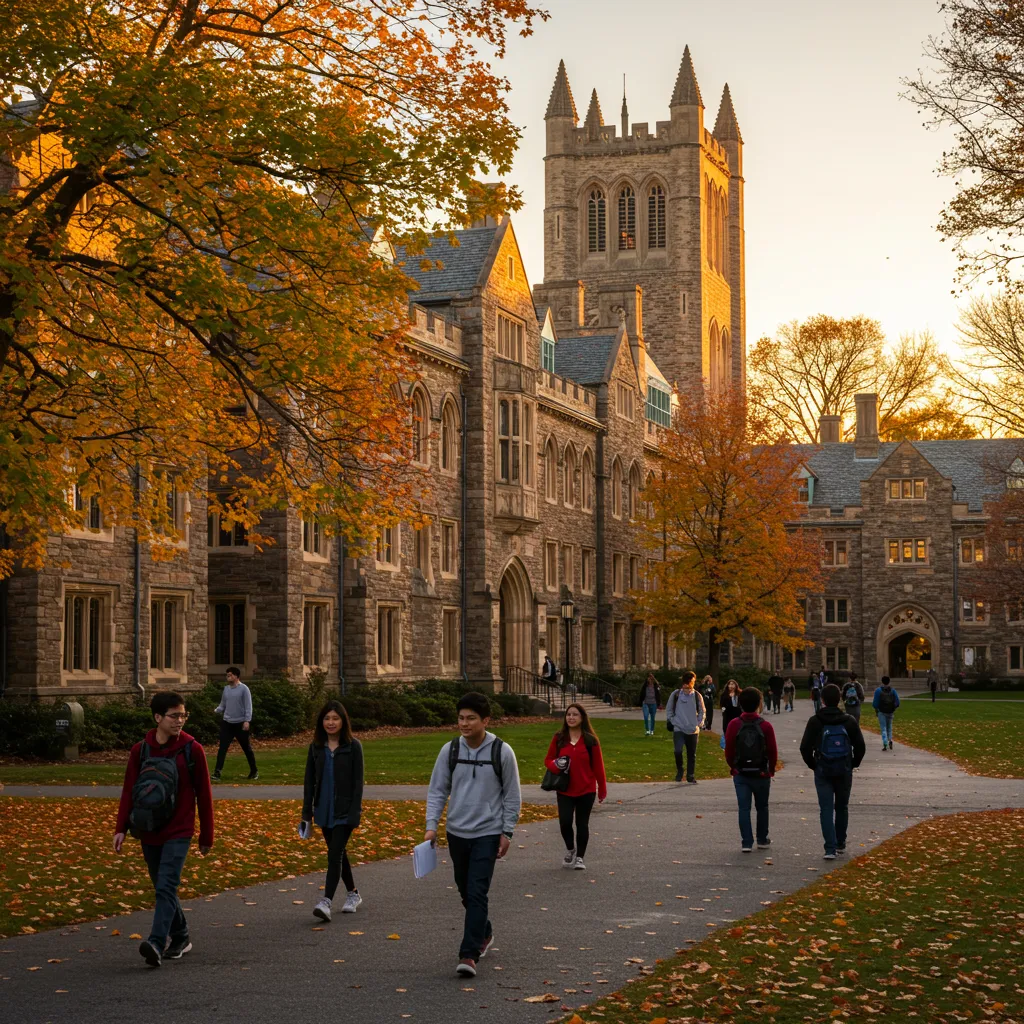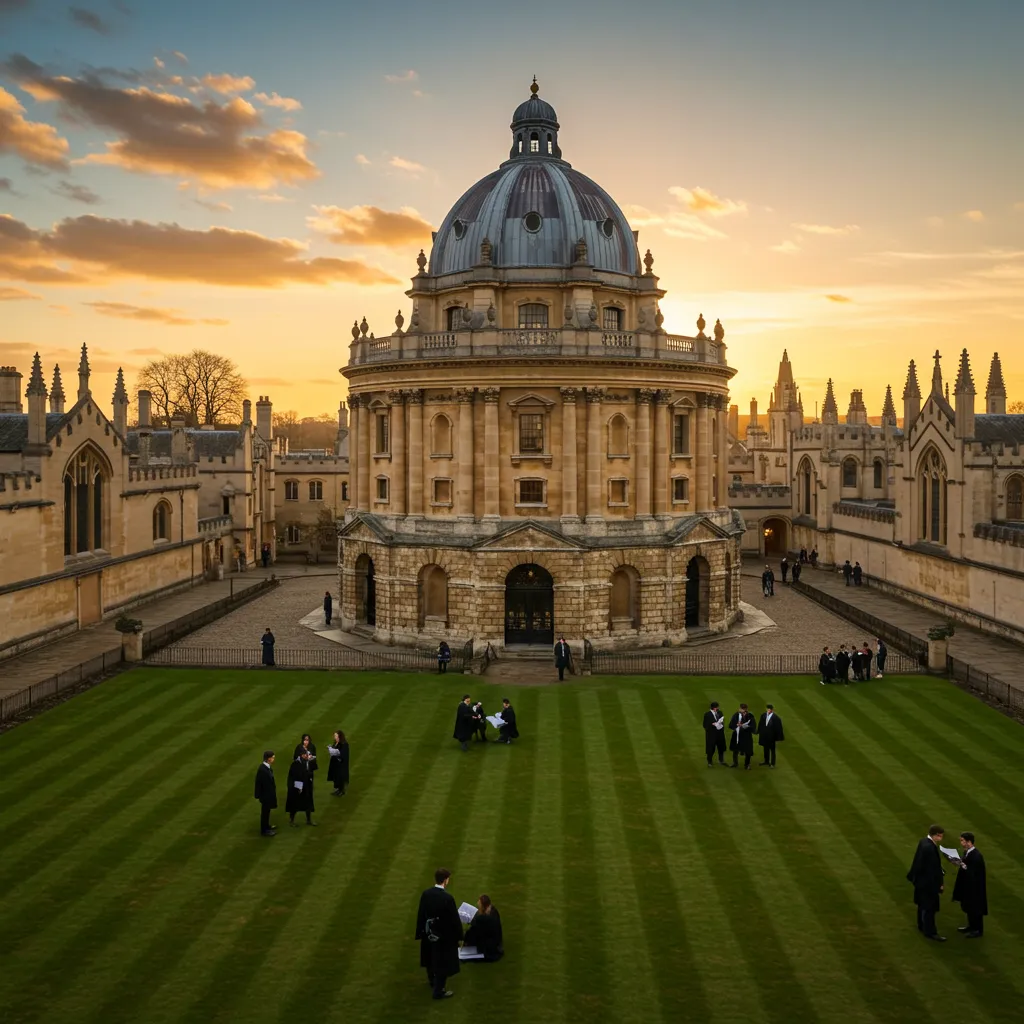When I was deciding where to go for university, I quickly realized it wasn’t just about picking the most prestigious name or the flashiest ranking. It was about something deeper—finding a place that matched my academic ambitions, career dreams, and the kind of person I wanted to become. I considered the ivy-covered campuses in the United States, the rich academic traditions of the United Kingdom, and even looked at leading universities abroad. What I learned through my own journey is that choosing the right university can truly shape your life in ways you never expect. In this guide, I want to share insights that I wish I had when I was making that choice, to help you navigate your own academic path with confidence.
🇺🇸 Top Universities in the United States
The United States boasts diverse institutions renowned for academic excellence, research opportunities, and vibrant campus life. Here’s a look at some of the top universities in the U.S. for 2025:
When I explored universities in the U.S., I was amazed by how diverse and dynamic the options were. Each campus seemed to have its own unique energy—whether it was cutting-edge research labs, world-class professors, or just the buzz of student life. I found that American universities really prioritize innovation and hands-on learning, which was a huge draw for me. Whether you’re into tech, liberal arts, or business, there’s a place that feels like it was made for you. Here are a few of the top ones that stood out to me while doing my research.
1. Princeton University
Princeton University: Education, History, Benefits & Location

1. Education: Rigorous Academics & Unique Opportunities
Princeton University, a top Ivy League school, offers undergraduate and graduate programs in humanities, engineering, natural sciences, and public policy. Known for its residential college system, students live and learn in tight-knit communities, while eating clubs (social hubs for upperclassmen) add a distinct social flavor. The university emphasizes hands-on learning through its preceptorial system, where small groups discuss ideas with professors. Princeton also manages leading research centers like the Princeton Plasma Physics Laboratory, giving students access to cutting-edge innovation.
2. History: From Colonial Roots to Modern Excellence
Founded in 1746 as the College of New Jersey, Princeton moved to its current campus in 1756 and became a university in 1896. Early leaders like John Witherspoon (a Declaration signer) and Woodrow Wilson (later U.S. President) shaped its academic rigor. For over 200 years, it admitted only men until 1969, when women joined as full-degree students. Today, Princeton balances historic traditions—like its Gothic architecture—with modern inclusivity, evolving into a global leader in education and research.
3. Benefits: Why Princeton Stands Out
Princeton’s $35.8 billion endowment ensures generous need-based aid, allowing 100% of demonstrated needs to be met without loans. Its alumni network includes 2 U.S. Presidents, 75 Nobel Prize winners, and leaders in tech, law, and the arts. Students benefit from a 6:1 student-faculty ratio, fostering mentorship, and over 500 student organizations for personal growth. Graduates enjoy high employment rates, with top firms and grad schools actively recruiting from Princeton.
4. Location: A Picturesque Campus Near Major Cities
Princeton’s 600-acre campus in Princeton, New Jersey, blends historic charm (think ivy-covered Nassau Hall) with modern facilities. Located halfway between New York City and Philadelphia, students access internships, culture, and career opportunities easily. The walkable campus features lush gardens, iconic landmarks like Lake Carnegie, and a small-town vibe with cafés and bookstores. It’s a peaceful yet connected environment for focused learning.
In Summary: Princeton University combines elite academics, rich history, financial support, and an ideal location—making it a top choice for students worldwide. 🐯
2. Massachusetts Institute of Technology (MIT)

1. Education: Innovation Meets Hands-On Learning
MIT focuses on STEM fields like engineering, computer science, and AI, blending classroom theory with real-world labs like the Media Lab and programs like UROP (Undergraduate Research Opportunities). It encourages entrepreneurship through competitions like the MIT $100K Challenge, preparing students to solve global challenges.
2. History: From Industrial Roots to Tech Titan
Founded in 1861 by William Barton Rogers to boost industrial innovation, MIT moved to Cambridge in 1916. It shaped WWII tech (radar, space systems) and later pioneered AI, robotics, and the internet. Leaders like Vannevar Bush and partnerships with industry/government cemented its role as a research powerhouse.
3. Benefits: Why Choose MIT?
With a $27.4B endowment, MIT offers need-blind aid and fosters a culture of creativity (its motto: Mens et Manus—“Mind and Hand”). Alumni include 100+ Nobel laureates and founders of 30,000+ companies (e.g., Intel, Dropbox). Students enjoy an 8:1 student-faculty ratio and access to cutting-edge labs.
4. Location: Urban Hub of Tech & Collaboration
MIT’s 166-acre campus in Cambridge, Massachusetts (Map), sits near Boston’s tech scene and Harvard. Highlights include the Great Dome, futuristic Stata Center, and Kendall Square—a hotspot for startups. The Charles River location blends green spaces with city energy.
In Short: MIT combines groundbreaking research, entrepreneurial spirit, and a prime location to shape global innovators. 🔬🚀
3. Harvard University

1. Education: Liberal Arts & Global Leadership
Harvard offers 50+ undergraduate majors and 150+ graduate programs across law, medicine, business, and more. Known for its liberal arts focus, students explore diverse fields like humanities, sciences, and public policy. The Harvard Library—the world’s largest academic library—supports learning with 20+ million resources.
2. History: America’s Oldest University
Founded in 1636, Harvard began as a Puritan seminary and evolved into a global leader. Under presidents like Charles W. Eliot (1869–1909), it modernized into a research powerhouse. Women were admitted in 1969, and today it champions diversity and innovation.
3. Benefits: Prestige & Opportunities
With a $50.7B endowment, Harvard offers need-blind aid, covering 100% of demonstrated need. Alumni include 8 U.S. presidents, 188 billionaires, and 162 Nobel laureates. Students access internships, global networks, and cutting-edge research centers like the Harvard Art Museums.
4. Location: Historic & Vibrant Campuses
Harvard’s 209-acre main campus is in Cambridge, MA (Map), near Boston. It features iconic spots like Harvard Yard and Memorial Hall. Additional campuses in Allston (tech/innovation hub) and Longwood (medical schools) blend historic charm with urban energy.
In Short: Harvard combines centuries-old tradition, world-class academics, and unmatched resources in a dynamic New England setting. 🎓🔴
4. Stanford University

1. Education: Innovation & Interdisciplinary Learning
Stanford offers seven schools, including engineering, business, law, and medicine, with a focus on hands-on research and entrepreneurship. Students access top labs like SLAC National Accelerator and the Hoover Institution. The university emphasizes interdisciplinary programs, blending tech, arts, and humanities to solve global challenges.
2. History: From Tragedy to Tech Powerhouse
Founded in 1885 by Leland and Jane Stanford to honor their son, Stanford opened in 1891. After financial struggles and earthquake damage in 1906, it rebounded post-WWII under Frederick Terman, who sparked Silicon Valley by encouraging startups. Controversies like past admission biases and unethical experiments mark its complex legacy.
3. Benefits: Elite Network & Resources
With a $36.5B endowment, Stanford offers generous aid (over 1/3 of undergrads receive scholarships). Alumni include 94 billionaires and 58 Nobel laureates. Students join 36 NCAA teams (winning 136 championships) and access internships in tech giants like Google, Apple, and Tesla.
4. Location: Silicon Valley’s Academic Hub
Stanford’s 8,180-acre campus (Map) in Palo Alto, California, mixes red-tile architecture with tech innovation. Nearby Stanford Research Park birthed companies like HP. The campus includes forests, lakes, and Jasper Ridge Preserve, blending nature with cutting-edge labs.
In Short: Stanford merges academic rigor, entrepreneurial spirit, and a prime Silicon Valley location to shape global leaders. 🌲💡
5. Yale University

1. Education: Liberal Arts & Global Leadership
Yale offers 15 schools, including Yale College (undergraduate), Law School, and Drama School. Known for its liberal arts focus, students explore diverse fields like humanities, sciences, and performing arts. The Yale University Library (15+ million books) supports research, while small class sizes foster mentorship.
2. History: From Ministers to Modern Scholars
Founded in 1701 to train clergy, Yale expanded into sciences and humanities by the 1800s. It awarded the first U.S. PhD (1861) and became a university in 1887. Alumni include 5 U.S. presidents and 68 Nobel laureates, shaping law, politics, and culture.
3. Benefits: Prestige & Support
With a $41.4B endowment, Yale provides need-blind admissions and meets 100% of financial need. Students access Rhodes Scholarships, global internships, and alumni networks like Supreme Court justices and CEOs. Unique programs include the Yale Schwarzman Center for arts and public events.
4. Location: Historic Campus & Urban Access
Yale’s 1,015-acre campus in New Haven, Connecticut blends Gothic architecture with modern labs. Near NYC and Boston, students enjoy museums, theaters, and internships. The city’s food scene and green spaces like East Rock Park add to campus life.
In Short: Yale combines Ivy League tradition, generous aid, and a vibrant New England setting to nurture global leaders. 🎓🔵
🇬🇧 Leading Universities in the United Kingdom
The UK is home to some of the world’s most historic and prestigious universities. Here’s a snapshot of top UK institutions for 2025:
1. University of Oxford
- Location: Oxford, England
- Highlights: With a history dating back to the 12th century, Oxford offers a collegiate system and a tutorial-based teaching method, emphasizing personalized learning.
2. University of Cambridge
- Location: Cambridge, England
- Highlights: Cambridge is known for its rigorous academics, particularly in mathematics and the sciences, and a strong emphasis on research.
3. Imperial College London
- Location: London, England
- Highlights: Specializing in science, engineering, medicine, and business, Imperial is at the forefront of research and innovation.
4. University College London (UCL)
- Location: London, England
- Highlights: UCL offers a multidisciplinary approach, with strengths in arts, humanities, and sciences, and a diverse international student body.Reddit+3Leap Scholar+3Top Universities+3Reddit
5. London School of Economics and Political Science (LSE)
- Location: London, England
- Highlights: LSE is a leading social science university, focusing on economics, politics, sociology, law, and related fields.U.S. News+1Niche+1
🌍 Top Universities Abroad
Beyond the U.S. and UK, several institutions worldwide offer exceptional education and research opportunities:
1. ETH Zurich – Swiss Federal Institute of Technology
- Location: Zurich, Switzerland
- Highlights: ETH Zurich is renowned for its engineering and technology programs, emphasizing research and innovation.
2. University of Toronto
- Location: Toronto, Canada
- Highlights: As Canada’s leading university, it offers a wide range of programs and is known for its research output and diverse student population.
3. University of Melbourne
- Location: Melbourne, Australia
- Highlights: The University of Melbourne is recognized for its comprehensive curriculum and strong research initiatives, particularly in medicine and the sciences.
4. National University of Singapore (NUS)
- Location: Singapore
- Highlights: NUS is a leading global university in Asia, offering a blend of Western and Asian academic traditions and a strong focus on research.Shiksha+25Diario AS+25Le Monde.fr+25
5. University of Tokyo
- Location: Tokyo, Japan
- Highlights: As Japan’s premier university, it excels in various disciplines, including science, engineering, and humanities, with a strong research culture.
📊 Comparative Overview
| Region | Top University | Notable Strengths |
| United States | Princeton University | Undergraduate focus, research excellence |
| United Kingdom | University of Oxford | Personalized learning, historic prestige |
| Switzerland | ETH Zurich | Engineering, technology, innovation |
| Canada | University of Toronto | Research output, diverse programs |
| Australia | University of Melbourne | Comprehensive curriculum, research |
| Singapore | National University of Singapore | Blend of traditions, research focus |
| Japan | University of Tokyo | Science, engineering, humanities |
💡 Key Insights for Prospective Students
- Academic Fit: Consider universities that align with your academic interests and career goals.
- Research Opportunities: Look for institutions with strong research programs in your field of interest.
- Cultural Experience: Studying abroad offers exposure to new cultures and perspectives; choose a location that resonates with you.
- Financial Considerations: Evaluate tuition fees, cost of living, and available scholarships or financial aid.
- Language and Accessibility: Ensure you meet language requirements and consider the ease of travel and visa processes.
Q1: What factors should I prioritize when choosing a university?
A1: Focus on academic fit, research opportunities, campus culture, and financial aid. A university should align with your career goals and personal growth.
Q2: Why consider studying at a university abroad?
A2: International universities offer unique cultural exposure, specialized programs, and global networks that enhance both education and career prospects.
Q3: How do US universities differ from UK universities?
A3: US universities emphasize flexible curricula and extracurriculars, while UK universities prioritize focused, specialized degrees in shorter timeframes.
Q4: Which university is best for STEM fields in 2025?
A4: MIT and ETH Zurich lead in STEM, offering cutting-edge labs, industry partnerships, and innovation-driven programs.
🏁 Conclusion
Choosing the right university is a pivotal decision that shapes your academic and professional trajectory. Whether you opt for the esteemed halls of Princeton, the historic charm of Oxford, or the innovative environment of ETH Zurich, ensure your choice aligns with your aspirations and values. Conduct thorough research, reach out to alumni, and consider campus visits to make an informed decision.

